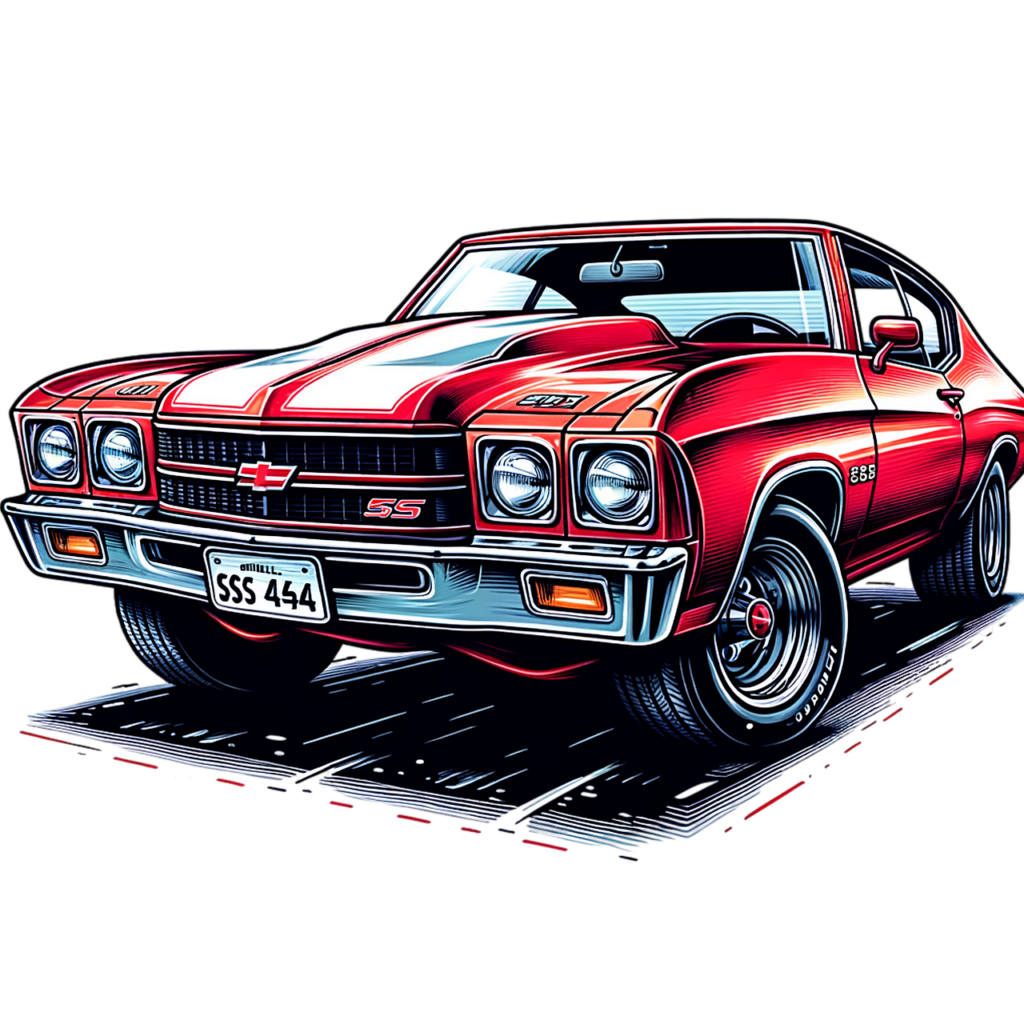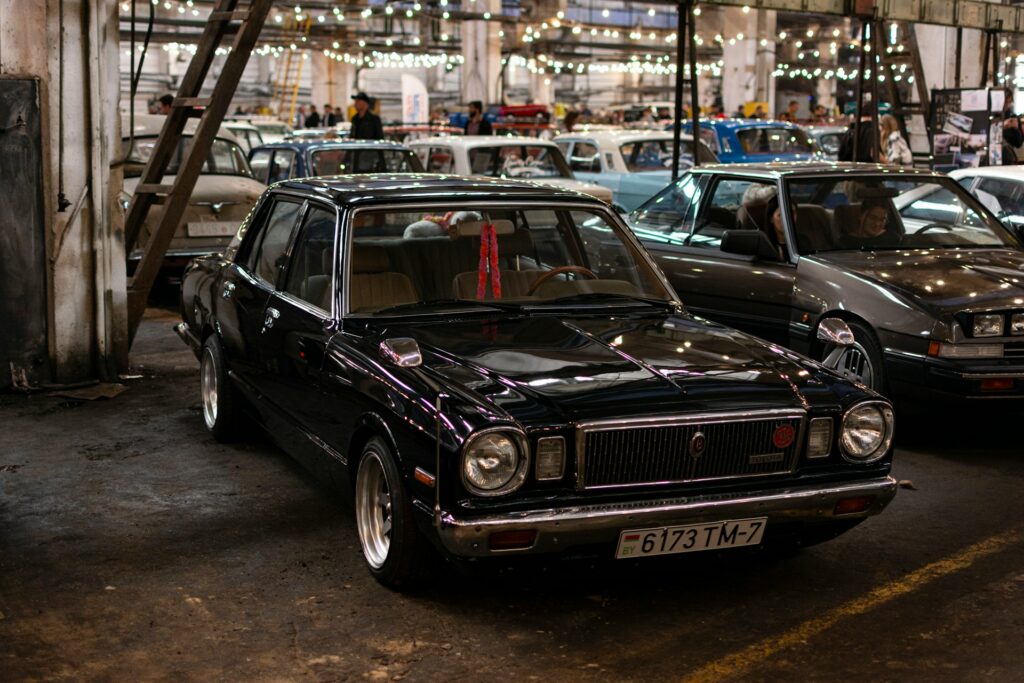As a symbol of Japan’s remarkable post-war recovery and technological innovation, classic Japanese cars embody a rich narrative of resilience and evolution. Notable models such as the Toyota 2000GT and Nissan Skyline GT-R epitomize this transformative journey, fusing superior craftsmanship with compelling design. The fascination around these classics extends beyond mere aesthetics, sparking a vibrant culture of restoration and preservation among enthusiasts. This enduring allure prompts a more profound exploration into their significant cultural impact, the stories these mechanical marvels tell, and how they continue to inspire generations of automobile aficionados.
Key Takeaways
- Japanese classic cars reflect Japan’s post-WWII recovery and growth, with iconic models like Toyota 2000GT and Nissan Fairlady Z.
- The 1980s saw the rise of performance cars such as Nissan Skyline GT-R and Toyota Supra, integral to the robust JDM culture.
- Technological advancements in the 1970s and 1980s, including fuel efficiency, safety enhancements, and performance tuning, revolutionized the Japanese automotive industry.
- Economic and cultural shifts, particularly during the Bubble Economy, led to the expansion of Japan’s automotive market and the development of luxury car models.
- Classic Japanese cars are collected and restored by enthusiasts, with market values influenced by rarity, condition, and historical significance.
The Birth of Japanese Automotive Industry
Innovation, a driving force behind every significant leap in human history, laid the foundation for the birth of the Japanese automotive industry. Emerging from the ashes of the Second World War, Japan faced an urgent need for a robust transportation system to support its post-war recovery. The automotive industry was a key player in this regard, providing the necessary horsepower for this monumental task.
The fledgling industry was marked by intense domestic competition, as manufacturers raced to produce reliable, affordable vehicles for the growing market. This domestic rivalry served as a catalyst for innovation, pushing the boundaries of automotive technology and design. Companies such as Toyota, Nissan, and Honda emerged, embracing a philosophy of continuous improvement known as ‘Kaizen’.
This period of the industry’s birth was characterized by a relentless quest for excellence, as these manufacturers endeavored to build cars that met the needs of their customers regarding price, durability, and fuel efficiency. The Japanese automotive industry’s birth is a reflection of Japan’s resilience and its unwavering commitment to innovation and quality, values that continue to propel the industry forward today.
Iconic Models of the 1960s
Amidst the backdrop of the rapidly evolving global car market, the 1960s heralded a new era for Japanese automakers. This decade marked the birth of many nostalgic models that would later become icons in automotive history. The Toyota 2000GT, for instance, set the tone for future sports cars from the land of the rising sun, while the Nissan Fairlady Z became a symbol of Japanese engineering prowess.
These iconic models were not mere products of industrial processes; they were embodiments of a cultural shift. The cultural significance of these models lay in their role as ambassadors of Japanese ingenuity, resilience, and precision to the rest of the world.
The Datsun 510 and the Honda S600, for example, were not just vehicles for transportation, but tangible signs of Japan’s recovery and growth after the devastating effects of World War II. Additionally, they became symbols of the country’s ability to produce cars that were not only reliable and efficient but also stylish and innovative.
These nostalgic models of the 1960s remain iconic to this day, reflecting a pivotal moment in Japan’s automotive history when the country started to make its mark on the global stage. Their cultural significance continues to resonate, reminding us of a time when Japan’s automotive industry began to shift gears, paving the way for a new era.
Revolutionary Advances in the 1970s
Building on the foundations laid in the 1960s, the 1970s saw Japanese automakers climbing to new heights with a series of revolutionary advances. Unyielding dedication to innovation enabled them to masterfully counter the decade’s fuel crises, leading to significant strides in fuel efficiency. The Japanese car industry, with its relentless commitment to technological refinement, pioneered transformative engine designs that dramatically reduced fuel consumption, setting new global standards.
Key advancements weren’t limited to fuel efficiency, however. The 1970s also saw Japan introduce critical safety enhancements to its automobile production. These included strengthened body structures, the adoption of crumple zones, and the introduction of advanced braking systems. With these pioneering safety features, Japanese automakers demonstrated their deep commitment to passenger protection, reshaping global expectations for vehicle safety and accelerating the industry’s evolution.
The 1970s was indeed a pivotal decade for the Japanese auto industry. It marked the period when Japanese cars evolved from being viewed merely as affordable alternatives to being respected as world-class vehicles. Through their pursuit of fuel efficiency and safety enhancements, Japanese automakers solidified their reputation for quality, reliability, and technological innovation, creating a legacy that resonates even today.

High-Performance Cars of the 1980s
As the 1970s drew to a close, Japanese automakers set the stage for a new era of high-performance vehicles, marking the 1980s as a golden age for Japanese speedsters. This epoch was characterized by substantial technological advancements, which bolstered performance levels and redefined the driving experience. These iconic automobiles not only dominated the roads of their time, but their innovative design and engineering principles continue to influence the modern automotive industry.
Iconic 80s Japanese Speedsters
Sweeping into the vibrant tapestry of the automotive world in the 1980s, Japanese speedsters carved their own unique niche. Underpinned by the robust JDM culture, these vehicles were more than just cars; they were symbols of a distinct lifestyle, brimming with racing heritage and a palpable nostalgia factor.
These classics, such as the Nissan Skyline GT-R and Toyota Supra, became legends on the street racing scene, their performance modifications a demonstration of the ingenuity of tuning shops of the era. Car meets echoed with the revving of these beasts, a vivid showcase of enthusiast communities and their shared passion for speed and style.
However, owning these icons was not without challenges. The scarcity of certain parts posed significant restoration challenges, yet the robust aftermarket support managed to keep these classics roaring on the streets. Despite the hurdles, the love for these cars has endured, fueled by the nostalgia factor and a collective reverence for their racing pedigree. Today, the legacy of these 80s speedsters lives on, cherished by a vibrant community of car enthusiasts, a reflection of their timeless appeal and enduring influence on car culture.
Technological Innovations in Performance
What propelled these iconic 80s Japanese speedsters into the annals of motoring history? A considerable part of the answer lies in the technological innovations in performance that were implemented by Japanese automakers during this era, which considerably elevated the capabilities of these vehicles.
The 1980s marked a revolutionary period in engine technology with the introduction of sophisticated electronic systems that enabled intricate performance tuning, leading to superior power output and fuel efficiency. Turbocharging advancements played a considerable role, providing substantial power gains without a corresponding increase in engine size or fuel consumption. Japanese engineers made pioneering strides in lightweight materials and aerodynamic design, which considerably reduced vehicle weight and drag, enhancing speed and handling.
Japanese automakers also introduced suspension innovations that offered superior road grip and handling dynamics, further amplifying the performance of these vehicles. Safety features were not overlooked, with the period seeing considerable advancements in braking systems, and the adoption of hybrid technology began to hint at the future of motoring. Each of these factors combined to create Japanese cars with high performance, exquisite handling, and exceptional fuel efficiency, solidifying their place in automotive history.
Impact on Modern Designs
While the technological innovations of the 1980s propelled Japanese performance cars into the annals of automotive history, their impact didn’t stop there. These groundbreaking vehicles markedly contributed to the design evolution of modern cars, transforming the aesthetics, performance, and general perception of automotive craft.
Retro aesthetics, once seen as dated and obsolete, have been rejuvenated, often integrated into contemporary designs as a nod to these influential classics. The streamlined bodywork, simplistic interiors, and distinctive grilles of 80s Japanese cars have become sources of inspiration, often reinterpreted to compliment modern technology while preserving a sense of nostalgia.
The influence extends beyond mere visual appeal. The performance-focused ethos of these classics, characterized by their lightweight design, efficient power-to-weight ratio, and reliable engines, has permeated the modern automotive industry. Today’s high-performance cars continue to embody these principles, ensuring a drive experience that’s not just thrilling but also dependable.
This enduring influence is a reflection of the timeless appeal of 1980s Japanese performance cars. Through the decades, they’ve remained not just beloved classics, but also crucial reference points in the evolution of automotive design. Their legacy continues to shape the cars we drive today, and likely those of the future.
The Impact of the Bubble Economy
In the domain of Japanese classic cars, one cannot overlook the profound impact of the Bubble Economy era. This period, lasting from 1986 to 1991, shaped Japan’s automotive industry through its significant economic influence. Driven by speculative investment trends, the Bubble Economy triggered a rapid market expansion, fueling a surge in automotive exports that catapulted Japanese brands into the global spotlight.
The Bubble Economy fostered an affluent consumer culture that was marked by a penchant for luxury. This luxury segmentation underpinned the evolution of Japanese car brands, with manufacturers developing high-end models to cater to the rich tastes of the era. Cars from this period are now revered for their opulence, embodying the nostalgia factor that makes Japanese classic cars so appealing to enthusiasts today.
As the Bubble Economy burst, it left a lasting legacy on the automotive landscape. The economic fallout spurred Japanese manufacturers to innovate, leading to a brand evolution that birthed vehicles known for their reliability, efficiency, and technological prowess. These traits continue to define Japanese cars, making them a beloved staple in the global automotive market to this day.
Notable Japanese Car Designers
The domain of Japanese classic cars is incomplete without acknowledging the visionaries behind these iconic models. These notables, the pioneers in car design, have not only shaped the trajectory of Japan’s automobile industry but have also made significant contributions to the global automotive design landscape. Their impactful designs, steeped in both innovation and tradition, have defined the unique character of Japanese automobiles and have left an indelible mark on the industry.
Pioneers in Car Design
Diving into the domain of Japanese automotive design, we encounter some true pioneers who have markedly shaped the industry. These designers, with their unique design philosophy and cultural influences, have etched their names in the annals of automotive history.
One cannot ignore the significance of Ken Okuyama, a creative genius who has contributed to the design of iconic cars like the Ferrari Enzo and Maserati Quattroporte. His design philosophy, which balances the traditional Japanese aesthetic with modern functionality, has revolutionized the way cars are perceived and crafted. Okuyama’s work is deeply influenced by the cultural ethos of Japan, reflecting a harmonious blend of simplicity and sophistication.
Equally influential is Nori Kuri, the mastermind behind the timeless design of the original Datsun 240Z. Kuri’s design philosophy resonates with the Japanese concept of ‘Mono no Aware’, appreciating the beauty of transience. This cultural influence is evident in the elegant simplicity and understated charm of the 240Z.
These pioneers, among others, have redefined the sphere of car design, infusing it with a distinctive Japanese character. Their work continues to inspire, shaping the contours of the automotive landscape. Their imprints are indelible, their legacy enduring.
Impactful Japanese Designs
Undeniably, the impact of Japanese car designs has been profound and far-reaching, reflecting an innovative fusion of form, functionality, and aesthetics. The minimalist aesthetics, coupled with an innate understanding of balance and harmony, have influenced global car design trends, making Japanese designers revered figures in the industry.
Japanese car designs are a reflection of their cultural influences. Rooted in the philosophy of “less is more”, these designs exude simplicity and elegance. They often embody the ‘mono no aware’ – a concept that appreciates the beauty of transience, manifesting in car designs that age gracefully.
Notable designers like Ken Okuyama, the brain behind the iconic Ferrari Enzo, and Shiro Nakamura, whose designs gave Nissan’s models a fresh identity, have made indelible contributions to the automobile world. Okuyama’s designs, reflecting the marriage of Italian flair with Japanese precision, and Nakamura’s infusion of ‘wabi-sabi’ (beauty in imperfection) into his work, have created designs that are timeless and impactful.
In essence, Japanese car designs, with their minimalist aesthetics and cultural influences, have undeniably changed the global automotive landscape, making them a significant part of automobile history.
Collecting and Restoring Japanese Classics
One’s interest in automobiles can often lead to a deep fascination with the world of classic Japanese cars. This passion births vibrant collector communities and car clubs, where enthusiasts share restoration techniques, maintenance tips, and track auction trends.
Restoring these idyllic machines is a complex process that necessitates a thorough understanding of preservation methods. Vintage parts are often difficult to find, causing an exciting chase for the right pieces. The surge in market values of these classic Japanese cars has made the hunt even more intriguing.
Enthusiast events provide a platform for collectors to showcase their DIY projects, exchange knowledge, and build relationships. Such gatherings are also ideal to learn about the fluctuating market values, which are influenced by factors such as rarity, condition, and historical significance.
The world of collecting and restoring Japanese classics is a fascinating one, filled with both challenges and rewards. It’s a reflection of the enduring appeal of these vehicles and the dedicated individuals who work to keep them alive. As more people get involved, the future of these Japanese classics looks promising.
Frequently Asked Questions
What Are the Most Affordable Classic Japanese Cars for Beginner Collectors?
For beginner collectors seeking affordability, Honda Civics and Datsun Roadsters are commendable choices. These models exude classic charm, offer reliable performance, and are relatively inexpensive, making them perfect starting points for any budding collection.
How Has Japans Climate Influenced the Preservation of Its Classic Cars?
Japan’s climate, characterized by humidity and high rainfall, presents challenges to vehicle preservation. However, innovative preservation techniques have been developed to combat climate impact and maintain the integrity of these historical artifacts.
What Are Some Common Maintenance Issues in Classic Japanese Cars?
Common maintenance issues in classic vehicles often include engine problems such as oil leaks or overheating. Additionally, rust issues are prevalent due to long-term exposure to various weather conditions, requiring regular inspections and repairs.
Are There Specific Legal Requirements for Importing Classic Japanese Cars?
Yes, specific import regulations apply when importing classic vehicles. These typically involve stringent checks on vehicle history and compliance with safety and emission standards. It’s essential to understand these requirements to avoid legal complications.
What Are Some Reputable Sources to Purchase Classic Japanese Cars?
Reputable sources for procuring classic vehicles include online marketplaces like eBay Motors and AutoTrader, as well as specialized auction houses such as Bonhams and RM Sotheby’s. Thorough research and inspection are advised prior to purchase.

